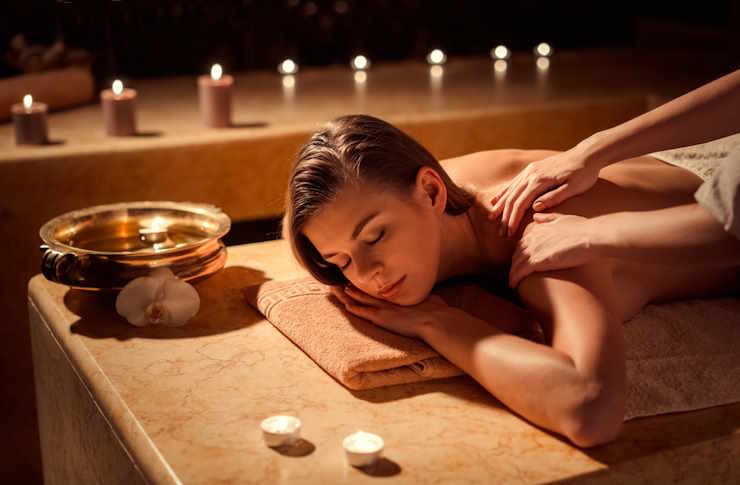Understanding Spa & Wellness: A Complete Guide to Self-Care
Modern life demands constant attention and energy, leaving many people feeling depleted and stressed. Spa and wellness practices offer scientifically-backed methods to restore balance, reduce stress, and improve overall health. From aromatherapy sessions to mindful massage treatments, these therapeutic approaches address both physical tension and mental fatigue. Understanding how different spa services work and what to expect can help you make informed decisions about incorporating wellness practices into your routine.

The wellness industry has evolved significantly over recent decades, transforming from luxury indulgences into recognized health practices. Research consistently shows that regular wellness activities can reduce cortisol levels, improve sleep quality, and enhance mental clarity. Professional spa environments provide controlled settings where trained therapists use evidence-based techniques to promote healing and relaxation.
What Makes a Spa Visit an Essential Part of Self-Care
Self-care extends beyond basic hygiene and nutrition to include activities that actively restore physical and mental well-being. Spa visits provide structured environments where multiple therapeutic modalities work together to address stress-related health issues. Professional massage therapy can reduce muscle tension and improve circulation, while controlled environments free from daily distractions allow the nervous system to shift into restorative modes. Regular spa treatments also create consistent opportunities for mindfulness practice, helping individuals develop better stress management skills that extend beyond the treatment session.
How Does Aromatherapy Help Promote Relaxation
Aromatherapy utilizes essential oils derived from plants to influence the limbic system, the brain region responsible for emotions and memory. When inhaled, aromatic compounds travel through the olfactory system directly to brain areas that regulate stress responses. Lavender oil, for example, contains linalool and linalyl acetate, compounds that research shows can lower heart rate and blood pressure. Eucalyptus and peppermint oils contain menthol and eucalyptol, which can help clear respiratory pathways and improve focus. Professional aromatherapists understand proper dilution ratios and application methods to maximize therapeutic benefits while ensuring safety.
What Are the Benefits of Combining Massage with Mindfulness
Combining physical massage therapy with mindfulness practices creates synergistic effects that enhance both interventions. Massage therapy stimulates pressure receptors under the skin, which send signals to the brain that can reduce pain perception and promote endorphin release. When clients practice mindfulness during massage sessions, they develop greater body awareness and can more effectively identify areas of tension or discomfort. This conscious attention helps maximize the therapeutic benefits of touch therapy while teaching valuable stress management techniques. Studies indicate that mindful massage recipients often experience longer-lasting relief from chronic pain and improved emotional regulation compared to those receiving massage alone.
How Can Spa Rituals Improve Emotional Well-Being
Spa rituals create structured sequences of activities that promote psychological transitions from stressed states to relaxed ones. These rituals often begin with environmental changes such as soft lighting, calming music, and comfortable temperatures that signal to the nervous system that it’s safe to relax. The sequential nature of spa treatments, from initial consultation through various therapies to final relaxation periods, provides psychological frameworks for processing daily stresses. Regular participation in wellness rituals can help individuals develop better emotional regulation skills and create positive associations with self-care activities.
What Should You Expect During Your First Spa Experience
First-time spa visitors typically begin with consultation sessions where therapists assess individual needs and preferences. Most facilities provide orientation tours to familiarize clients with amenities such as relaxation areas, changing facilities, and treatment rooms. Initial treatments often start with gentler modalities such as aromatherapy or light massage to help clients become comfortable with the environment. Professional therapists explain each procedure beforehand and maintain ongoing communication about pressure preferences and comfort levels. Many spas provide post-treatment relaxation time and hydration to help clients transition gradually back to regular activities.
| Service Type | Typical Duration | Average Cost Range |
|---|---|---|
| Basic Massage Therapy | 60-90 minutes | $80-$150 |
| Aromatherapy Session | 60 minutes | $90-$160 |
| Facial Treatment | 60-75 minutes | $75-$200 |
| Full Day Package | 4-6 hours | $300-$600 |
| Wellness Consultation | 30-45 minutes | $50-$100 |
Prices, rates, or cost estimates mentioned in this article are based on the latest available information but may change over time. Independent research is advised before making financial decisions.
Wellness practices continue evolving as research reveals new understanding about stress physiology and therapeutic interventions. Regular spa visits can provide valuable opportunities to learn stress management techniques, experience professional therapeutic modalities, and develop sustainable self-care routines. The key lies in approaching wellness activities with clear intentions and realistic expectations about their role in overall health maintenance.
This article is for informational purposes only and should not be considered medical advice. Please consult a qualified healthcare professional for personalized guidance and treatment.



